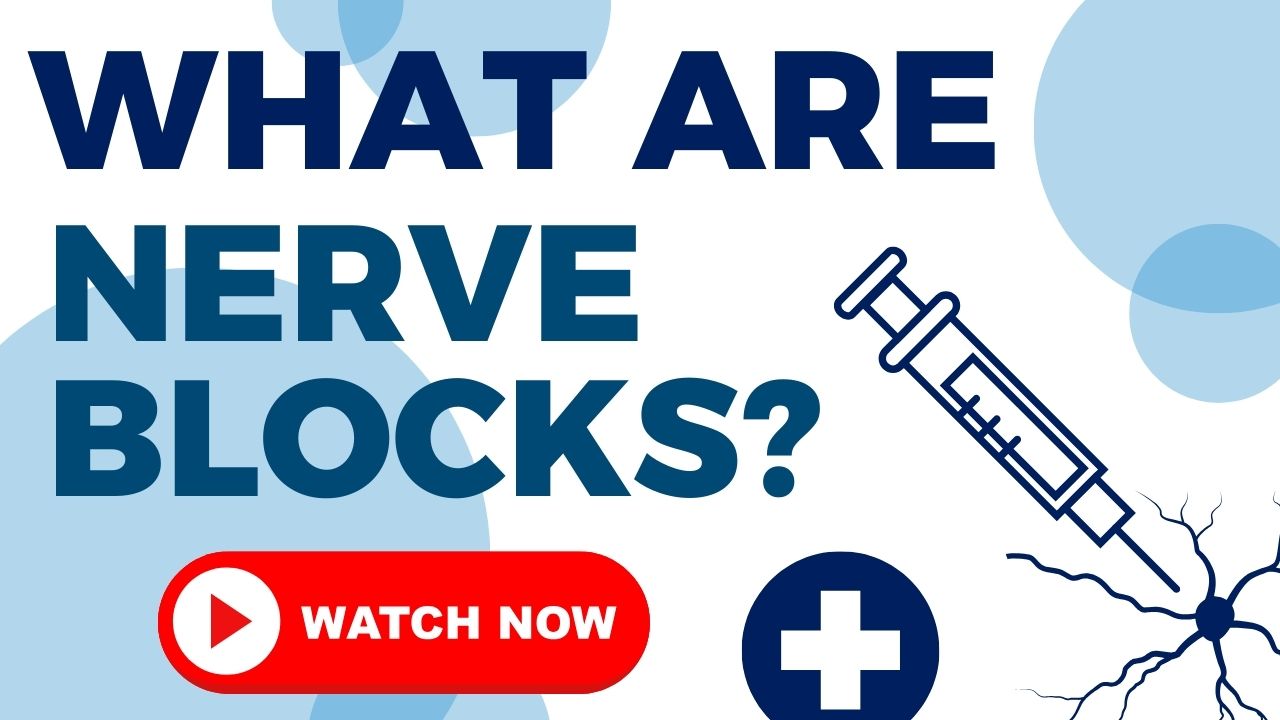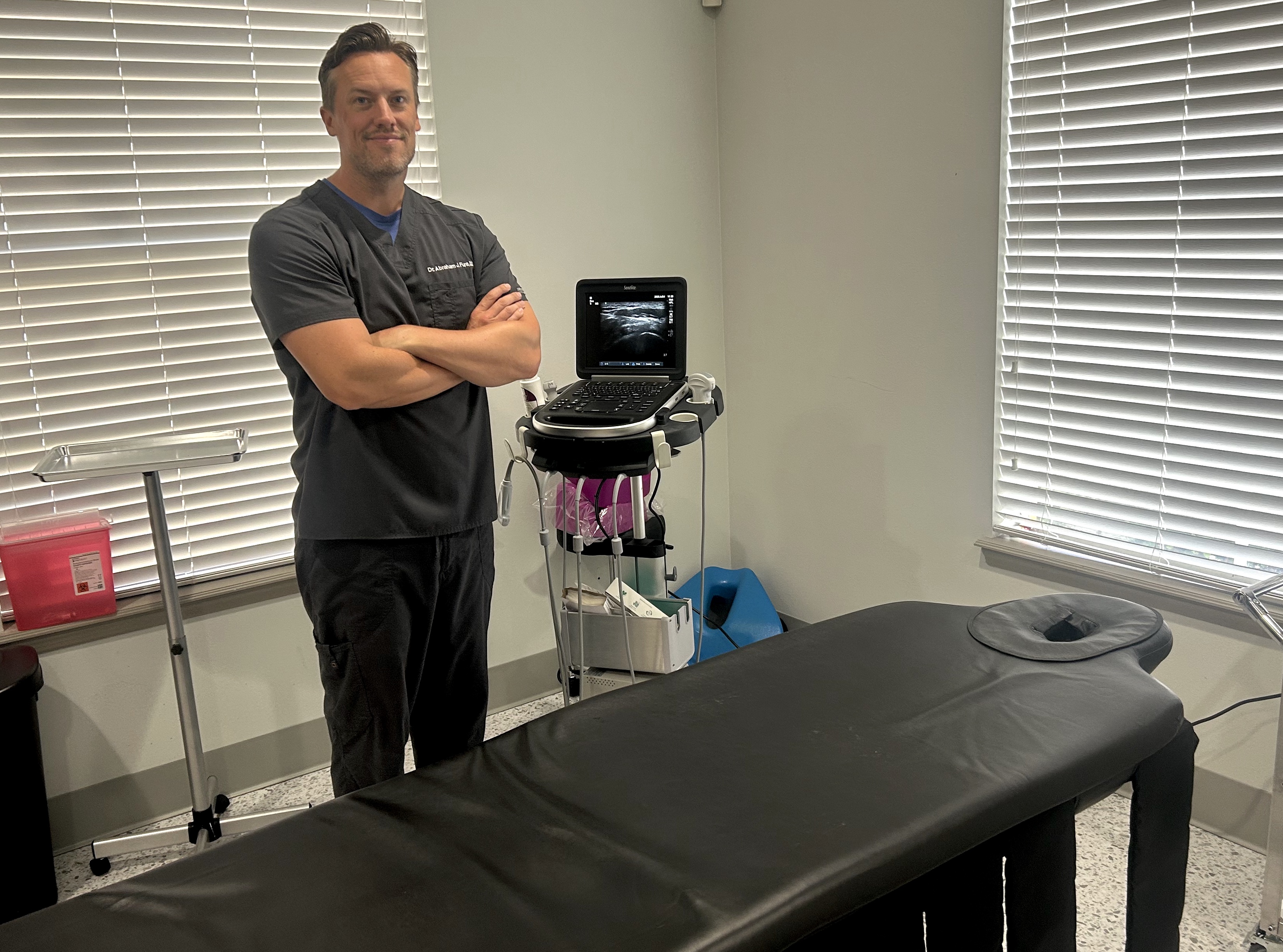
TREATMENT OVERVIEW
A Peripheral Nerve Block is a highly targeted injection that delivers medication directly to a specific nerve or group of nerves outside of the spine. Using advanced ultrasound guidance, this procedure can diagnose and treat a wide variety of focal pain conditions—from chronic knee arthritis to persistent shoulder pain—by precisely blocking pain signals at their source.


PROCEDURE DETAILS
During the procedure, you will be positioned comfortably to provide the best access to the target nerve. Your physician will use an ultrasound machine to get a clear, live image of the nerve, muscles, and blood vessels in the area.
After the skin is cleaned and numbed, your doctor will watch the ultrasound screen in real-time to guide a very thin needle precisely to the target nerve. This ultrasound guidance is the key to the procedure's safety and accuracy, as it allows for direct visualization of the needle tip, ensuring it is in the perfect spot while avoiding other structures.
Once the needle is correctly placed, the medication—usually a local anesthetic and a corticosteroid—is slowly injected. On the ultrasound, your doctor can see the medication spreading to surround and bathe the nerve. The entire process is quick, minimally invasive, and performed in our office.
TREATMENT ADVANTAGES
Peripheral nerve blocks are a cornerstone of modern pain management, offering a precise and powerful way to treat pain in specific joints and limbs without major surgery.
Live ultrasound guidance allows for direct visualization of the nerve, ensuring medication is delivered precisely where needed while actively avoiding other structures.
Effective for many conditions, including chronic knee pain (genicular block), shoulder pain (suprascapular block), and certain types of headaches (occipital block).
For conditions like chronic knee arthritis, these blocks can provide significant relief, potentially delaying or even avoiding the need for joint replacement surgery.
The block's immediate numbing effect confirms the targeted nerve is the pain source, while the steroid can provide long-lasting therapeutic inflammation relief.
This is a quick, in-office procedure that avoids the risks and prolonged recovery time of surgery, allowing you to return home the same day.
The window of pain relief allows you to participate more effectively in physical therapy, which is crucial for long-term improvements in function and strength.
IMPORTANT INFORMATION
Peripheral nerve blocks are very safe, especially when performed with ultrasound guidance. The most common side effects are temporary and expected as part of the procedure's numbing effect.
Important: The use of ultrasound guidance dramatically reduces the risk of complications by allowing your doctor to see and avoid blood vessels and the nerve itself during the injection.
PREPARATION GUIDE
Proper preparation is key to a successful and smooth procedure. Please review the following important steps to ensure you are ready for your appointment.
Ensure you have a thorough review with Dr. Fura. Disclose all allergies, especially to medications like contrast dye.
Stop blood thinners and other specific medications as instructed by Dr. Fura before your procedure.
Do not eat or drink after midnight. You must arrange for a responsible adult to drive you home afterward.
Wear comfortable, loose clothing. Avoid jewelry and leave valuables at home for safekeeping.
RECOVERY GUIDE
Recovery is very simple, with the main focus on being careful while the treated area is numb to prevent accidental injury.
The treated limb will feel numb, heavy, and possibly weak for several hours. It is crucial to protect it from injury. If your leg was treated, you may need assistance with walking until the feeling returns.
As the anesthetic wears off, normal sensation will return. You can use ice on the injection site for soreness. It is important to log your pain levels during and after the numbness for diagnostic purposes.
If a corticosteroid was used, its anti-inflammatory effects will begin to work, providing more sustained pain relief. You can gradually return to your normal daily activities as tolerated.
A follow-up is scheduled to discuss the results. Depending on your response, a series of injections or a longer-lasting procedure like radiofrequency ablation may be recommended.
Please don't hesitate to reach out and request an appointment. We look forward to meeting with you, addressing your concerns, and working together to enhance your quality of life.